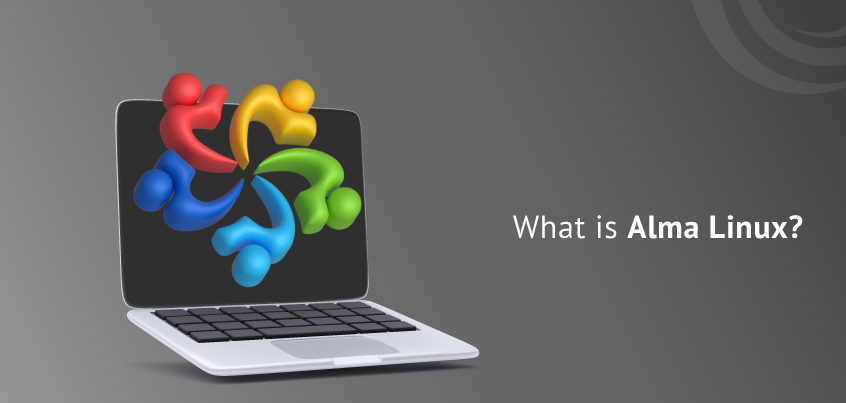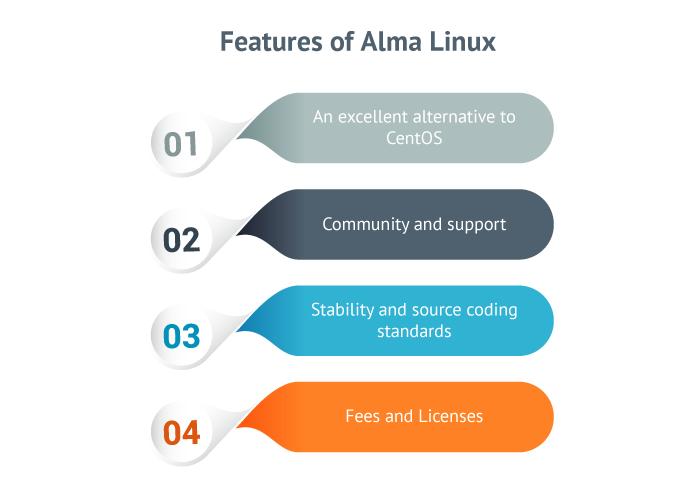
Everything You Need to Know About Almalinux: A Comprehensive Guide
Table of Contents
Learn about Alma linux, the free, community-driven operating system gaining popularity as a reliable and secure alternative to CentOS Linux. Discover its features, benefits and how to install and use it for personal
What is AlmaLinux?

AlmaLinux is a free and open-source Linux distribution designed as an alternative to CentOS Linux. Developed and supported by the community-driven AlmaLinux OS Foundation, it aims to provide a stable and reliable operating system with long-term support, suitable for enterprise environments. Alma Linux is built from the upstream source code of Red Hat Enterprise Linux (RHEL), ensuring compatibility and a seamless transition for users who were previously reliant on CentOS for their server infrastructure. With a focus on delivering a robust and community-driven alternative, Alma Linux serves as a compelling choice for organizations seeking a stable and secure Linux distribution for their server needs.
History of AlmaLinux
- CentOS Shift: Alma Linux emerged in response to the shift in the CentOS Linux project, which transitioned from a downstream, free version of Red Hat Enterprise Linux (RHEL) to CentOS Stream, causing concern among users relying on CentOS for stability.
- Foundation Establishment: The Alma Linux OS Foundation was established in early 2021 to spearhead the development and support of Alma Linux. This non-profit organization aimed to ensure the long-term viability and community-driven nature of the new distribution.
- Immediate Adoption: Alma Linux gained rapid adoption as a CentOS alternative due to its commitment to maintaining binary compatibility with RHEL and providing a free, community-supported enterprise Linux distribution.
- Continued Growth: Alma Linux continued to grow its user base and ecosystem, attracting support from individuals, organizations, and the broader open-source community as a dependable and accessible Linux distribution.
What was the purpose of designing Alma Linux?
Alma Linux is a stable enterprise distribution developed targeting businesses and organizations and designed to meet business goals. Although Alma Linux is typically considered a free alternative to Red Hat Enterprise Linux, users can also use it to build a secure, application-centric operating architecture.
Also, Alma Linux, in addition to being used in physical and desktop environments, is also used in virtual and cloud-based environments. Due to its stability and reliability, it is the ideal option for use on a server. To benefit from the fantastic features of this operating system, you need to buy a Linux VPS first, and by following the steps to install the Alma Linux operating system on the server based on the training we provided before about installing Alma Linux, you can also use this operating system on your server. Also, Alma Linux is not only designed for business purposes but is also a good choice for personal use.
Features of Alma linux

Almalinux is a versatile operating system that offers a range of features and benefits, including:
- Security: Alma linux has built-in security features such as SELinux, firewalld, and cryptographic support, which provide robust protection against cyber attacks and unauthorized access.
- Stability: Alma linux is known for its rock-solid stability and reliability, making it an ideal choice for mission-critical applications that require 24/7 availability.
- Performance: Alma linux is optimized for performance and can easily handle heavy workloads thanks to its efficient resource management and low overhead.
- Compatibility: Alma linux is compatible with a wide range of software and hardware, making it easy to integrate with existing systems and applications.
- Long-term support: Alma linux offers long-term support for up to 10 years, providing users with a stable and secure platform that can be relied on for years.
Uses of Almalinux
Almalinux can be used for a variety of purposes, including:
- Personal use: Alma linux is a great choice for Linux enthusiasts who want a stable and secure operating system for their computers and laptops.
- Enterprise use: Alma linux is ideal for businesses that require a reliable and secure operating system for their servers, databases, and other mission-critical applications.
- Educational use: Alma linux can be used in educational institutions to teach students about Linux and open-source software, providing valuable skills and knowledge.
- Governmental use: Alma linux is also suitable for government agencies that require a secure and reliable operating system for their systems and networks.
Hardware Requirements
1. Minimum Specifications:
- CPU: 2 GHz dual-core processor or equivalent.
- RAM: 2 GB of RAM.
- Disk Space: 20 GB of free disk space.
2. Preferred Specifications:
- CPU: Multi-core processor
- RAM: 4 GB or more
- Disk Space: 40 GB or more
Installing Almalinux

To install Almalinux, follow these simple steps:
- Check system requirements: Ensure your computer meets the minimum requirements for Almalinux, including CPU, RAM, and storage space.
- Download Almalinux: Download the latest version of Almalinux from the official website or mirror.
- Create a bootable USB: Use a tool like Rufus or Etcher to create a bootable USB drive with Almalinux.
- Installation steps: Boot from the USB drive, follow the on-screen instructions and choose the installation options that suit your needs.
Advantages of Alma Linux
- Binary Compatibility: AlmaLinux maintains binary compatibility with Red Hat Enterprise Linux (RHEL), allowing users to seamlessly transition from CentOS without concerns about application compatibility.
- Community-Driven: Developed by the AlmaLinux OS Foundation, the distribution is driven by a community-oriented approach, encouraging collaboration, transparency, and community contributions to shape the direction of the project.
- Free and Open Source: AlmaLinux is freely available and open-source, aligning with the principles of open software development. This accessibility makes it an attractive choice for individuals and organizations seeking a cost-effective, enterprise-class Linux distribution.
Disadvantages of Alma Linux
- Limited Track Record: AlmaLinux might lack the extensive track record and history that some other established Linux distributions possess. This can be a concern for users who prioritize a long and proven history of stability.
- Dependency on Upstream Code: AlmaLinux relies on the upstream source code of RHEL. While this ensures compatibility, it also means that any changes or decisions made by Red Hat in the development of RHEL could impact AlmaLinux. This dependency may lead to delays in incorporating the latest features or security updates.
- Evolutionary Changes: As with any evolving project, there could be changes in the development or strategic direction of AlmaLinux. Users should stay informed about any significant changes that may impact their systems.
- Ecosystem Transition: For users transitioning from CentOS, adapting to the AlmaLinux ecosystem may involve adjustments, such as changes in repositories, tools, or community resources.
Conclusion
In conclusion, AlmaLinux stands out as a better and community-driven Linux distribution, positioned as a worthy successor to CentOS. Its commitment to maintaining binary compatibility with Red Hat Enterprise Linux (RHEL) ensures a seamless transition for users seeking a stable and long-term supported platform. The establishment of the AlmaLinux OS Foundation reflects a community-oriented approach, enabling collaboration and transparency.
